Alienware Area-51 7500 featuring Quad-Core and 8800 SLI Review
Alienware Area-51 7500 featuring Quad-Core and 8800 SLI
Alienware's mothership PC lands in our labs featuring the latest technology from Intel and nVidia.
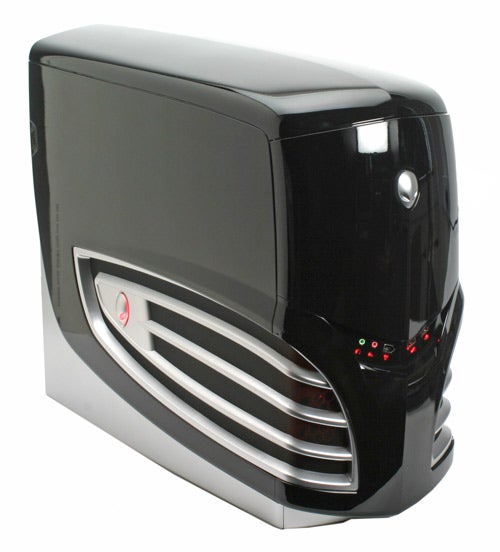
Verdict
Key Specifications
- Review Price: £3260.82
There’s a certain irony that after so many years of getting consumers to obsess about GHz, Intel’s done a pretty good job of re-educating consumers that it’s now Cores, not clock speed, that matter. The result is that people want its latest and greatest CPU, the quad-core Kentsfield, officially dubbed the Core 2 Extreme QX6700, even if they don’t really need it.
While PC architecture is moving inexorably to multi-core architectures, one has to question the value of quad-core on the desktop right now, especially in a gaming system. As we said in our Core 2 Extreme QX6700 review at the start of November, applications are only just starting to be optimized for dual-core, let alone quad. The fact is that for the gamer, right now a dual-core X6800 Extreme is the fastest CPU you can get due to its higher clock speed (2.93GHz vs 2.66GHz).
However, Alienware is hardly alone in this as every boutique manufacturer wants to showcase the latest and greatest technology in a flagship system. And by top-end, I mean top end. Occupying two of the three (yes, three) PCI Express slots are two GeForce 8800 GTX graphics cards, bringing simply outrageous 3D performance into the grasp of anyone with a large enough wallet. To accommodate this we hooked up the system to a 30in Dell display we happened to have lying around the office, (after a few minutes playing on it, I wished it was lying around my desk at home). We also tweaked our gaming tests to run at its native resolution of 2,560 x 1,600. After all, if you’re buying a system such as the Alienware it would be an insult to hook it up to anything less.
These state-of-the-art components are housed in Alienware’s cool new chassis, which actually looks even more impressive in black than it does in blue. The red lights that glow underneath the front mounted USB, FireWire and audio and microphone sockets, as well as the Alien heads on the side are all very cool. Behind the door on the front of the system that opens forwards and moves sideways, there’s a multi-format DVD re-writer and what Alienware dubs a ’28-in-one-‘ media card reader. These numbers are getting silly – I’m waiting for the 1,356,06834-in-one card reader to make an appearance. Beneath this there’s something called a floppy disc drive meaning that there’s no other 5.25in drive bays free in this configuration.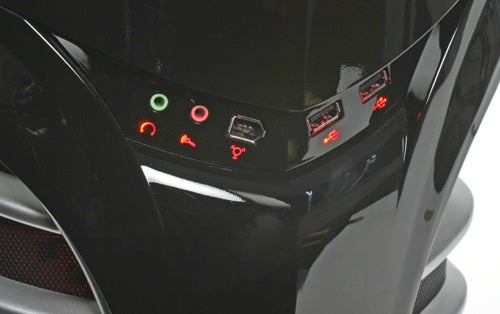
Opening up the side of the case, you’ll find a very neat interior, though bizarrely Alienware in its literature claims that it’s giving you 50 worth of wiring up for free! One would expect a pre-built system to arrive actually wired up, so I’m not really sure it’s the bargain it claims to be. Still, it is all very neat and tidy. There’s space for four hard discs in the interior, and two are supplied in this system – two Hitachi Deskstar 7K500s, each with 500GB capacity. These are set up in RAID 0 capacity for the best performance. It adds two points of failure but with games such as Oblivion demanding as much I/O performance as you can give them, RAID 0 on a desktop system is starting to make more sense.
The motherboard is an EVGA nForce 680i SLI 775. Based on the new-fangled SLI chipset for Intel Core 2 Duo processors this is packed with technology – there’s the two x16 PCI Express graphics slots along with one x8 slot, which is ready and waiting for something like an Aegia PhysX card, should you feel the need. There are also two x1 slots, though only the top one is accessible for use. There’s a generous eight USB 2.0 ports, two at the front and six at the rear. There are also two full size FireWire ports, one at the front and one at the rear. Other cool features include dual Gigabit Ethernet. The SATA ports are side mounted, so you don’t have to worry about straining SATA cables. On the base of the system is a PCB that contains the controllers for the case lights. This is controlled by software but it wasn’t installed on the system we were sent. 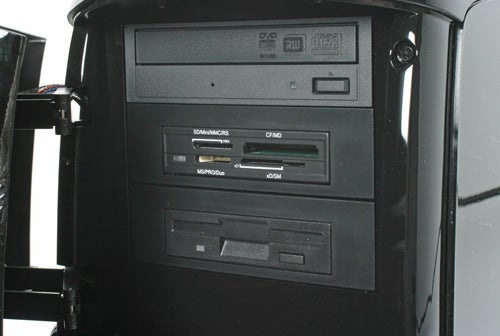
The chipset has built in 7.1 Azalia HD Audio but this is supplanted by the presence of a Creative X-Fi card, which always sounds fabulous to my ears. This was spoilt somewhat by severe stuttering and distortion in the audio when playing Oblivion and a driver update made no difference. However, the issue seemed limited to Oblivion, as the audio was fabulous in all the other games I tried, such as Battlefield 2 and Call of Duty 2.
The motherboard features a passive heatsink on both the Northbridge and the Southbridge, with a heatpipe running between the two and radial fins dissipating the heat. Alienware has also fitted a very large fan/heatsink arrangement over the Kentsfield CPU. Any fan noise this generates is more than drowned out by the noise generated by the system fans – or at least one fan in particular. 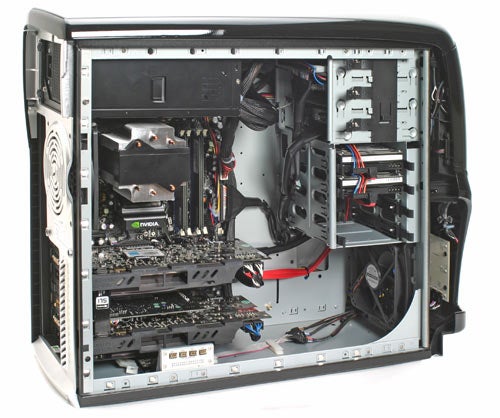
While the ones at the front and side are near silent, the one at the rear is simply the loudest fan I’ve ever heard. It seems to generate 90 per cent of the system noise – impressive considering what’s in this system, though not in a good way. The press release for the system also referred to thermal sensors enabling dynamically adjusting the fan speed to allow for a quieter system, but this simply didn’t work. I moved the fan cable to three different fan headers on the motherboard but to no avail. However, Alienware has assured me that it will be changing this rear fan to the quiet one used at the front in all shipping systems, so if it sticks to its word you won’t have to share the aural pain we had to undergo in the office.
The memory supplied is two sticks of PC2-6400 Patriot memory, running at 400MHz by default and there are two free slots if you want to go up to 4GB. The stars of the show though are the two very large 8800 GTX cards sitting inside the system. nVidia has done a great job on the cooling on these cards and in-and-of-themselves they don’t produce too much noise. The cards are held in place with ‘card catchers’ which keeps things secure in transit. The X-Fi is stuck in between the two graphics cards and I was worried about heat build-up.
The power supply is this system is rated at a hefty 1,000W, which is what you need to run this kind of rig safely and reliably. Fortunately, it wasn’t too loud, which has been a problem with previous systems from Alienware, though as mentioned, this improvement was spoilt by the rear case fan.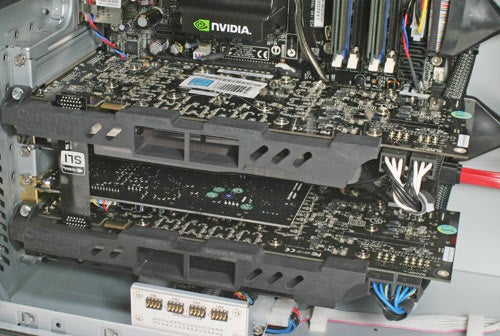
The keyboard and mouse supplied are both excellent. A wireless Logitech L7 and a G15 keyboard, reviewed here and here respectively.
So, onto the performance of the beast. We’ll start with the 2D results. Rather than SYSmark 2004 we ran our custom made SpodeMark 2D benchmarks with enhancements to increase threading to make the best use of the four cores of the QX6700. For comparison we have our reference Kentsfield test and to our reference dual-core Core 2 Extreme QX6700.
To be brutal, the results are a little disappointing. In all the 2D tests, even the multi-tasking ones, the previous Alienware and our reference Kentsfield system were both faster. The fact that it’s faster on the latter implies that it’s not just the higher clock speed of the Core 2 Extreme QX6700. The problem is most likely to be the nForce 680i SLI chipset – it clearly has considerable overhead, or in early revisions, just isn’t that fast.
Let’s move on to 3D results. Our Call of Duty test is one of our favourites as it’s very demanding due to the amount of particles and explosions on screen. Here the system excels, throwing out incredible numbers at every resolution – even at 1,280 x 1,024. Performance doesn’t drop until you hit 2,0 48 x 1,536 but even on the 30in Dell at 2,560 x 1,600 it’s still smooth all the way at over 60fps.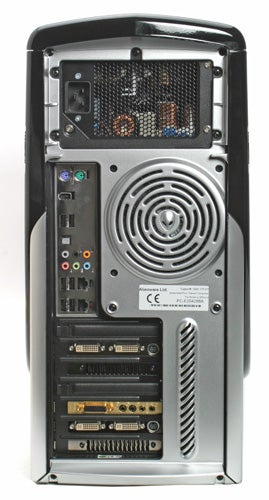
In our Quake 4 tests, there appears to quite a bit of SLI overhead – a combination of OpenGL, and early drivers for the card. However, once you get to 2,048 x 1,536 with 4x FSAA the cards sheer horsepower starts to make itself felt. It’s exactly the same story at Battlefield 2.
Prey, though based on OpenGL, runs on DirectX and seems to scale a lot better on the twin 8800s, as with Call of Duty. The 3DMark 06 result echoes what we see at 1,280 x 1,024 in the games – two cards are actually slower than one, but only once the features are turned on at higher resolutions does it start to make a difference.
To get a sense of what the system could do aside from benchmarks, I took the time to actually sit down in front of it and play Oblivion, one of the most graphically impressive and demanding games around right now, with the system hooked up to a 30in Dell. I’ve been playing Oblivion at home and am currently running two 7800GTs on a widescreen 19in display – not bad certainly, but not uber-high end either, and a good marker for comparison. The combination of the Alienware and the 30in Dell, running at its native 2,560 x 1,600 resolution was quite simply amazing – incredibly detailed, beautiful to look at, and thoroughly immersive.
The 8800 is the first card from nVidia that can run both FSAA and HDR at the same time. I was able to push all the video settings for Oblivion all the way up to the maximum, and run at 16x FSAA and 16 anisotropic filtering. The detail and sharpness was tremendous, particularly because the filtering quality on the 8800 from nVidia is far better than its previous 7xxx series of cards. The thing is that now I hardly can face going home to play on my comparatively weedy home system.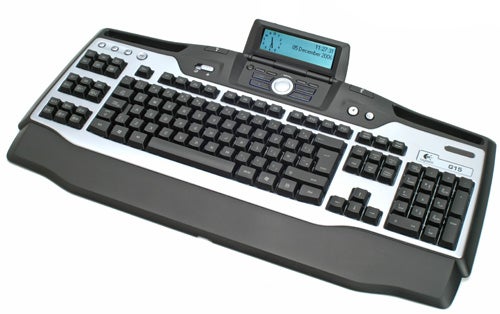
Of course, the system is expensive, as with all Alienware system, but you do get the benefit of Alienware’s support package and a very cool looking pre-built case. Deciding to recommend the system or not was a difficult one to call as it depends on who the market is. If you’re looking for a superb value gaming PC, this isn’t really it. Yes the overall gaming performance is stellar but a more average system with one 8800 GTX system will give all the performance you’ll need.
It very much depends on what display you’ll be hooking this up to. You only really need a system like this right now if you’re pairing it with a Dell 30in or equivalent as otherwise it’s overkill. However there is some logic to buying it for games. Once titles that really can take advantage of more than two cores arrive, such as Crysis and Alan Wake next year, the advantage of quad-core will really start to become apparent, and the slower 2D scores we see here will be forgetten. This is actually a machine that will get faster in the future, and that’s not true of the average PC.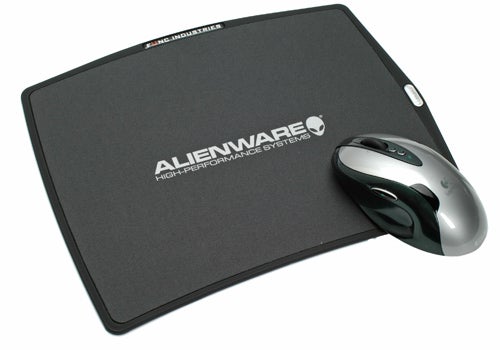
Additionally, if you’re into your 3D modelling apps, such as 3D Studio Max and LightWave as well as busting out with games then this is the system for you.
On that basis the Alienware gets an award – not in the rush out and buy this to run Office and play the Sims kind of way, but as a great example of super high-end halo effect technology in action. After all, this level of performance and technology will trickle down into cheaper system before too long.
”’Verdict”’
As beautifully packaged and presented a PC as you would expect from Alienware but busting with bleeding edge kit. The quad-core CPU is a little ahead of its time, and a higher clocked dual-core processor will be faster right now, but the four cores will come into their once applications start to arrive. The dual 8800s only make sense if you’ve got a Dell 30in screen to attach them to, but if you are lucky enough to be able to afford the combo, then this system will deliver an outrageously impressive gaming experience.
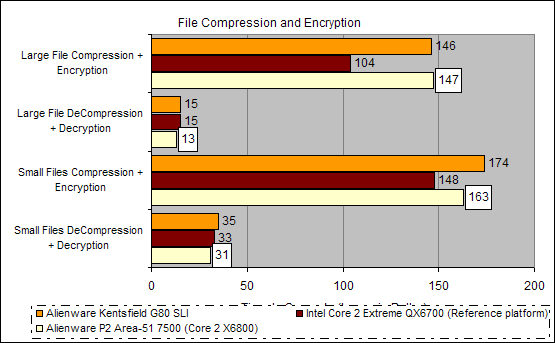
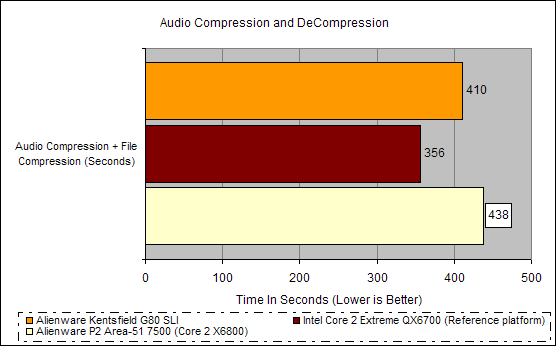
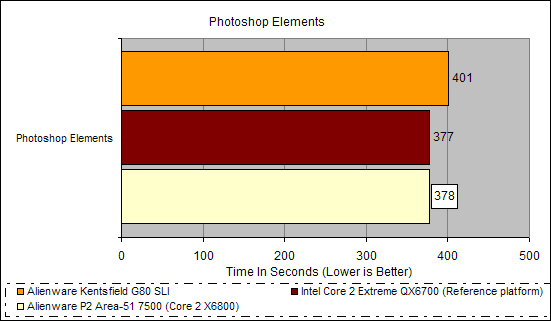
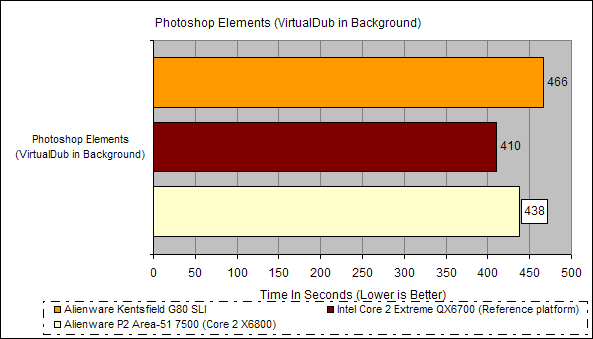
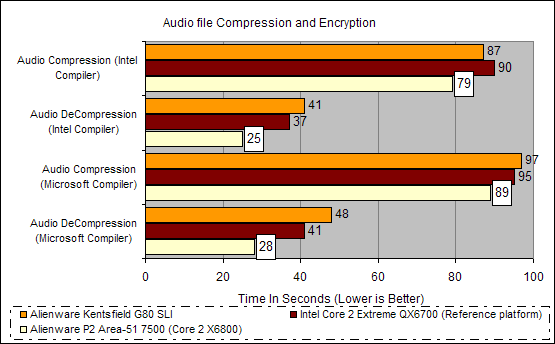
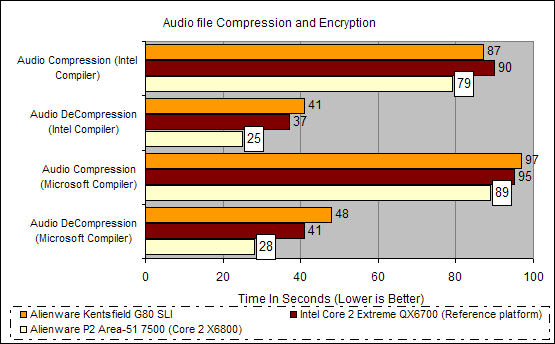
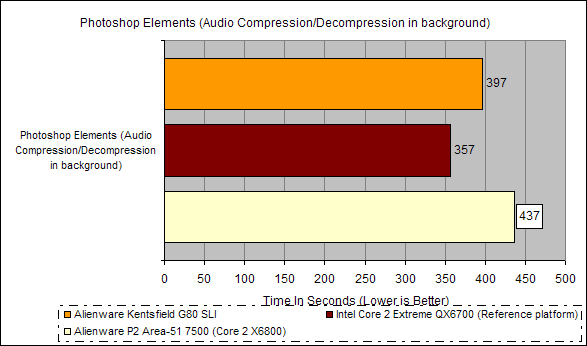
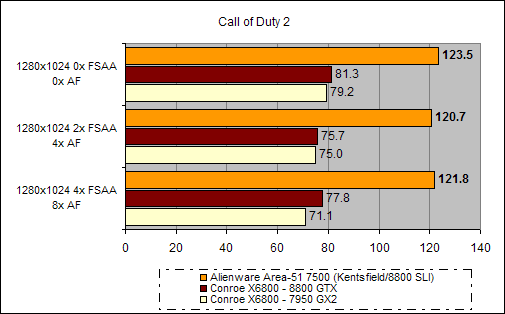
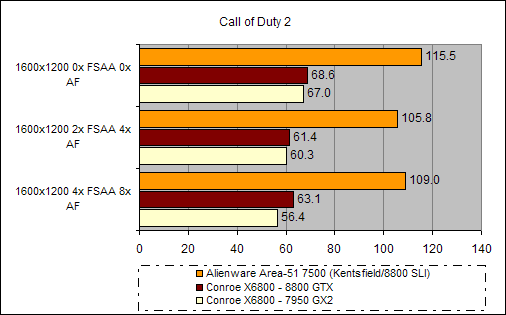
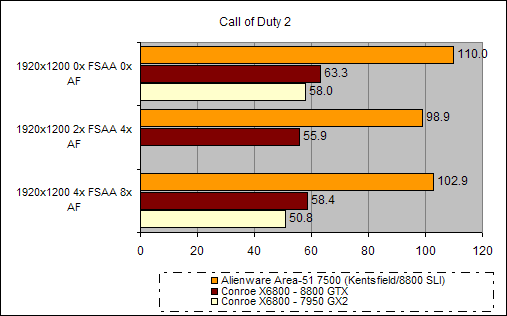
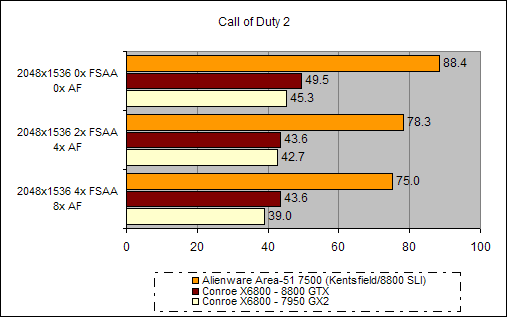
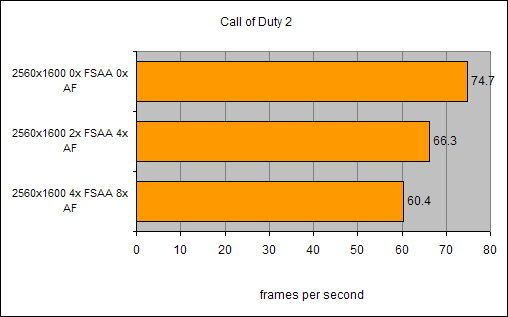
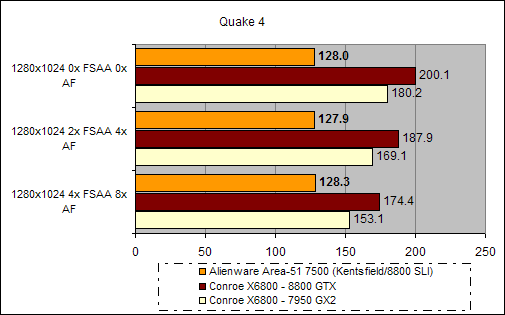
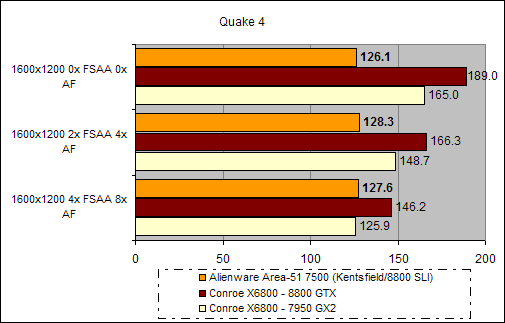
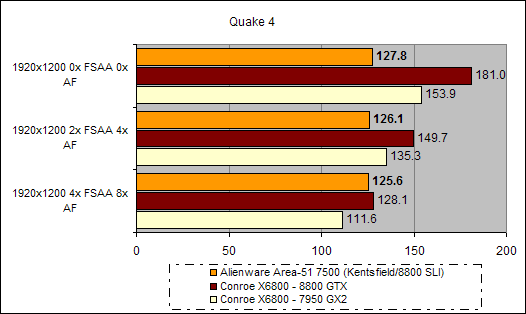
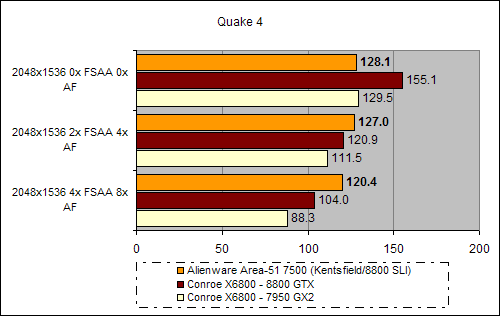
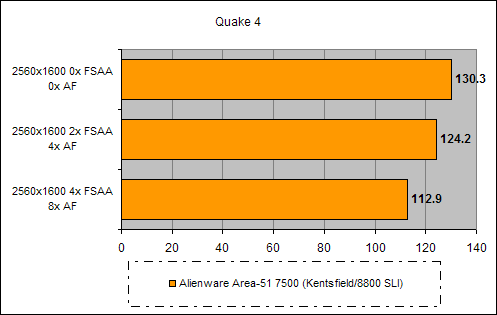
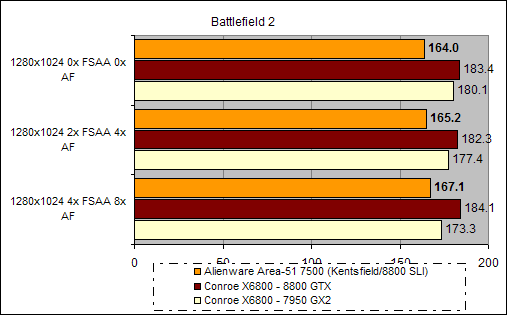
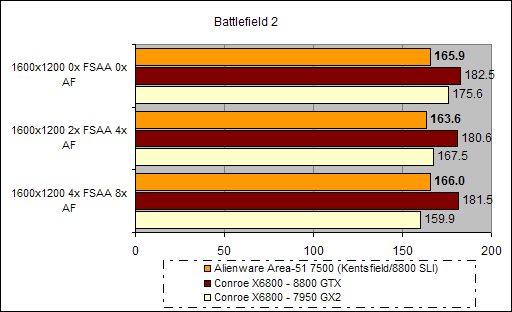
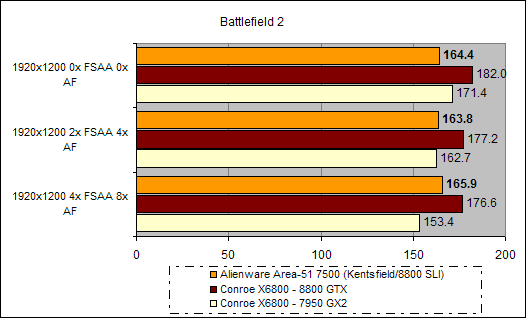
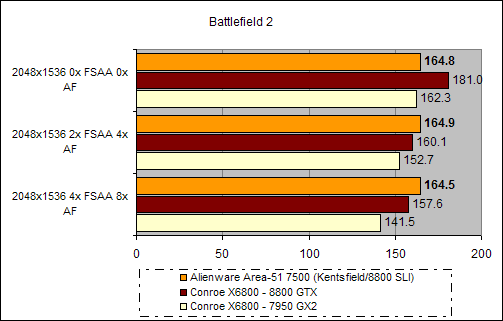
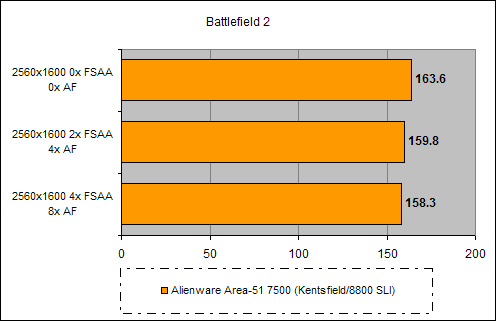
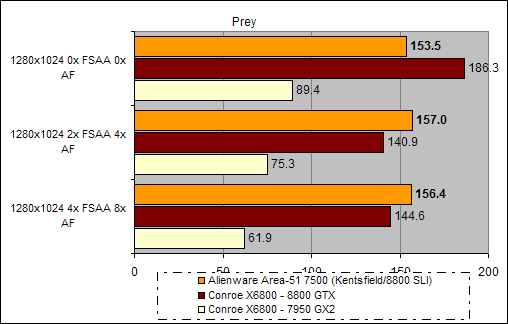
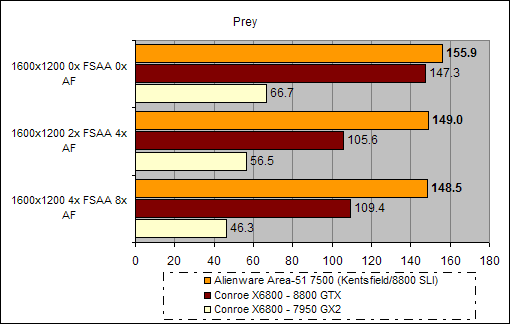
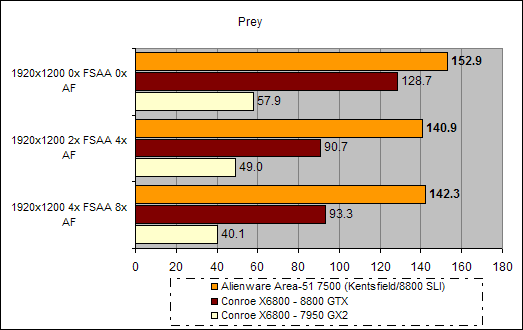
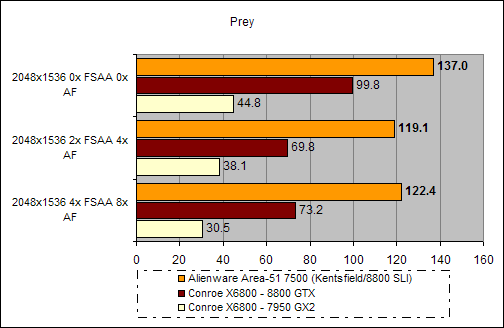
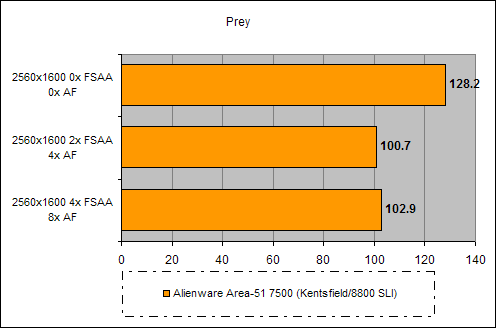
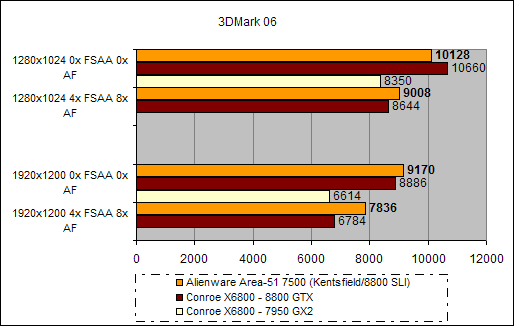
Trusted Score
Score in detail
-
Value 7
-
Features 10
-
Performance 10

